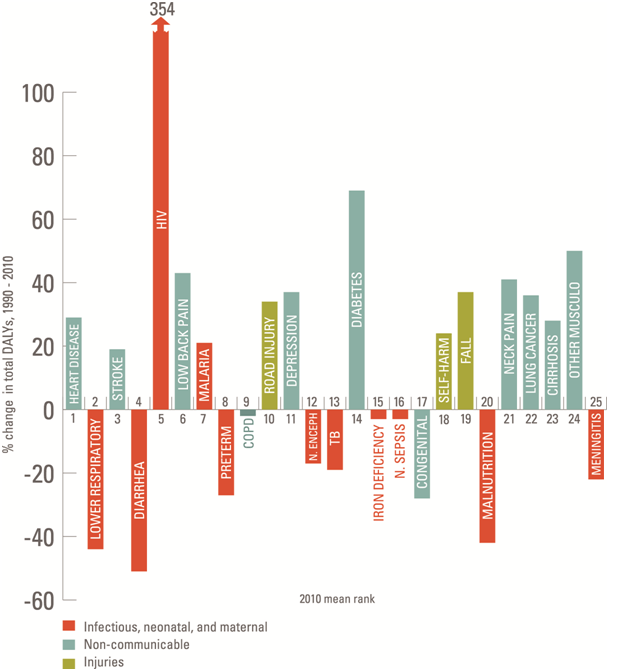Disability-adjusted life years (cont.)

Source: Institute for Health Metrics and Evaluation (2013).
![]() Examine the estimates of changes between 1990 and 2020 in the burden of disease from leading causes of loss of healthy life. What do you think primarily accounts for the changes in the disease burden attributable to diarrhoea and to falls. Please try and answer the questions for yourself before obtaining feedback.
Examine the estimates of changes between 1990 and 2020 in the burden of disease from leading causes of loss of healthy life. What do you think primarily accounts for the changes in the disease burden attributable to diarrhoea and to falls. Please try and answer the questions for yourself before obtaining feedback.
Please type an answer to both questions in the text boxes above before hitting the Feedback button.
Diarrhoea: Most of the disease burden resulting from diarrhoea is experienced by children. The number of children in the world only grew slightly between 1990 and 2010. The drop in DALYs lost to diarrhoea over the two decades resulted almost entirely from decreases in the incidence of diarrhoea and improvements in its management.
Falls: The incidence of falls increases rapidly with age. Falls are primarily a health problem of older people and the number of older people in the world grew by about 60 per cent between 1990 and 2010. Thus, the growth in the burden of disease resulting from falls is explained largely by changes in the size and age structure of the world’s population. The age-specific incidence of falls probably changed little over time and improved care of people injured in falls may have somewhat offset what would otherwise have been an even greater rise in the DALYs resulting from falls.